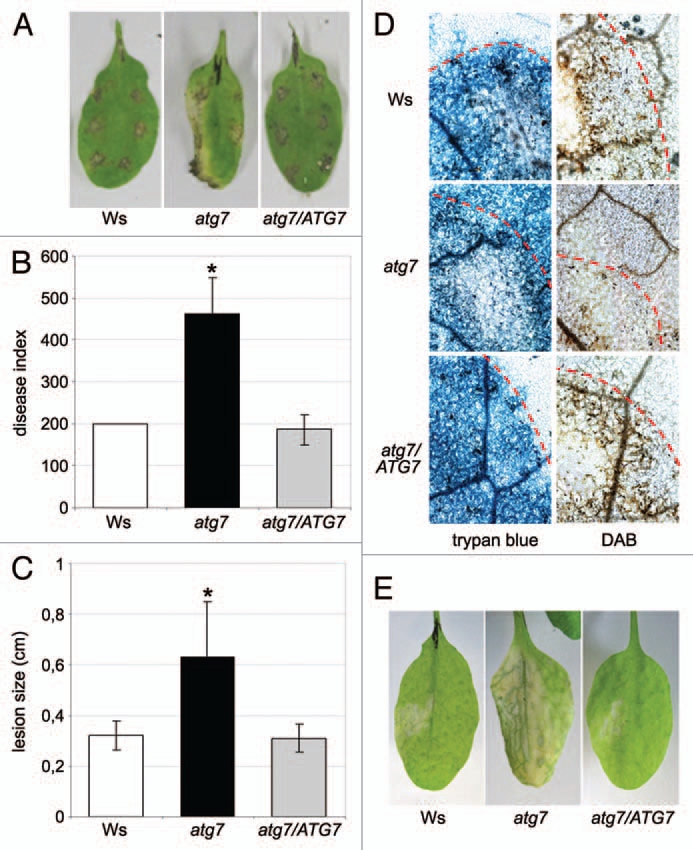Figure 1.

atg7 mutants are more susceptible to infection with necrotrophic A. brassicicola and treatment with fumonisin B1. Wild-type Ws plants, atg7 mutants and the corresponding complemented atg7/ATG7 line were drop-inoculated with 106 spores/ml of Alternaria brassicicola. (A) Disease symptoms on representative infected leaves were monitored on day 11 after infection. (B and C) From leaves shown in (A) the disease indices (B) and lesion sizes (C) were determined. Results represent means ± SD (n ≥ 12) and statistical significance compared to the wild-type (p ≤ 0.05, Student's t-test) is indicated by asterisks. (D) Fungal structures and dead plant cells were stained with trypan blue at day 7 after infection (left parts). H2O2 production in infected leaves was detected 7 days post infection using 3,3′-diaminobenzidine tetrahydrochloride (DAB) staining (right parts). Leaves were analyzed by light microscopy. Dotted lines indicate borders of spore inoculation sites. (E) The fungal toxin fumonisin B1 causes spreading necrosis in atg7 mutants. Wild-type Ws plants, atg7 mutants and the atg7/ATG7-complementation line were infiltrated with 10 µM fumonisin B1 on one leaf side and development of necrotic cell death was monitored 6 days after treatment. All shown experiments were performed at least in triplicate with similar results.
